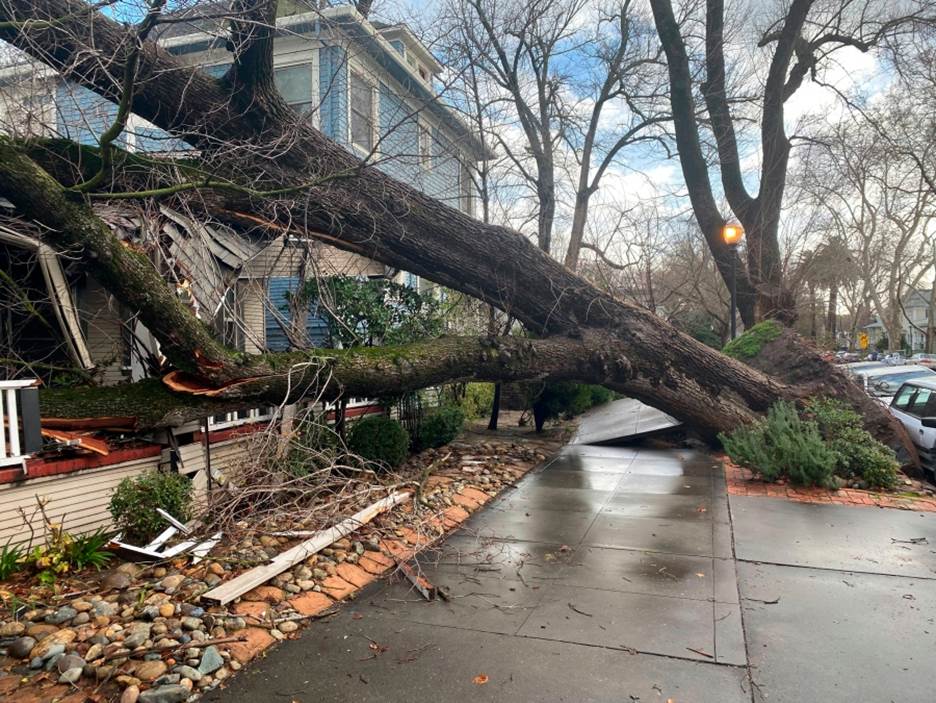
KTLA
'The Ground Is Saturated' from Days of Rain, but More Storms Are Still Headed for California
By Elizabeth Weise
California dealt with the aftermath of a major winter storm as the extent of the damage became clear Friday.
While the storm was less devastating than had been feared, it still caused destruction up and down the coast. A tourist beach town was ravaged, more than 57,000 people were without power and trees and branches were draped across sidewalks from Santa Cruz up past Marin County.
Meanwhile, state officials are bracing for three more storms — two well-defined and one still forming. Together they could mean rains that continue through mid-January, bringing persistent wet weather and with it the ongoing possibility of mudslides and flooding.
What's next for the weather in California?
- The next storm will hit early Saturday early morning and pour between 1.5 and 3.5 inches of rain in the northern California coastal region along with winds that could reach 60 mph at local mountain peaks.
- The next one will begin Sunday night with the heaviest rainfall occurring Monday. Winds could go as high as 70 mph at some peaks and the rainfall will be prodigious.
- That won't end the deluge by any means. Afterward, it's almost a daily chance of rain "really until the end of the month," said National Weather Service meteorologist Brayden Murdock.
The second storm is the most concerning, said Murdock.
The worst rains will be in already hard-hit Monterey County, home to popular destinations such as Carmel-By-The-Sea, Monterey and Pebble Beach. It could see as much as ten inches of rain between Sunday night and Tuesday afternoon, Murdock said.
How bad was the damage in California from last week's storms?
Here's a look at the damage:
Storms in California have been blamed for more than 5 deaths so far in recent days. Here's some of the most recent damage from Thursday's storm:
- In the beach town of Capitola, just five miles east of Santa Cruz, monster waves split the Capitola Wharf in two.
- Capitola Village was inundated by water that came both from the ocean and from waves that traveled up Soquel Creek, which runs through the downtown area. Trees toppled throughout the area, caused by a trifecta of drenched soils, high winds and drought stress.
- A huge, ancient oak tree crushed a preschool in the town of San Anselmo in Marin county, the San Francisco Chronicle reported. Classes were not scheduled to begin until Wednesday so no one was hurt but the building was crushed under the limbs and trunk of the tree.
Tree damage had been feared by experts.
"A lot of our trees are stressed after three years of intensive drought, the ground is saturated and there is a significant chance of downed trees that will create significant problems," Karla Nemeth, director of the California Department of Water Resources, said at a news conference.
Damage could have been worse
While damage from the storm was extensive in localized areas, most people in northern California experienced only heavy rain showers, high winds and possibly flickering lights over the course of the event.
Rainfalls were lower than originally forecast, in part because the trajectory of the storm meant that some geographic features provided shelter. "Atmospheric rivers are more often oriented east to west, this one was south to north," Murdock said.
"It really depended on where you were," he said. "The rain was moving up from the south, so San Francisco had the San Mateo mountains blocking a lot of the rain." USA Today

